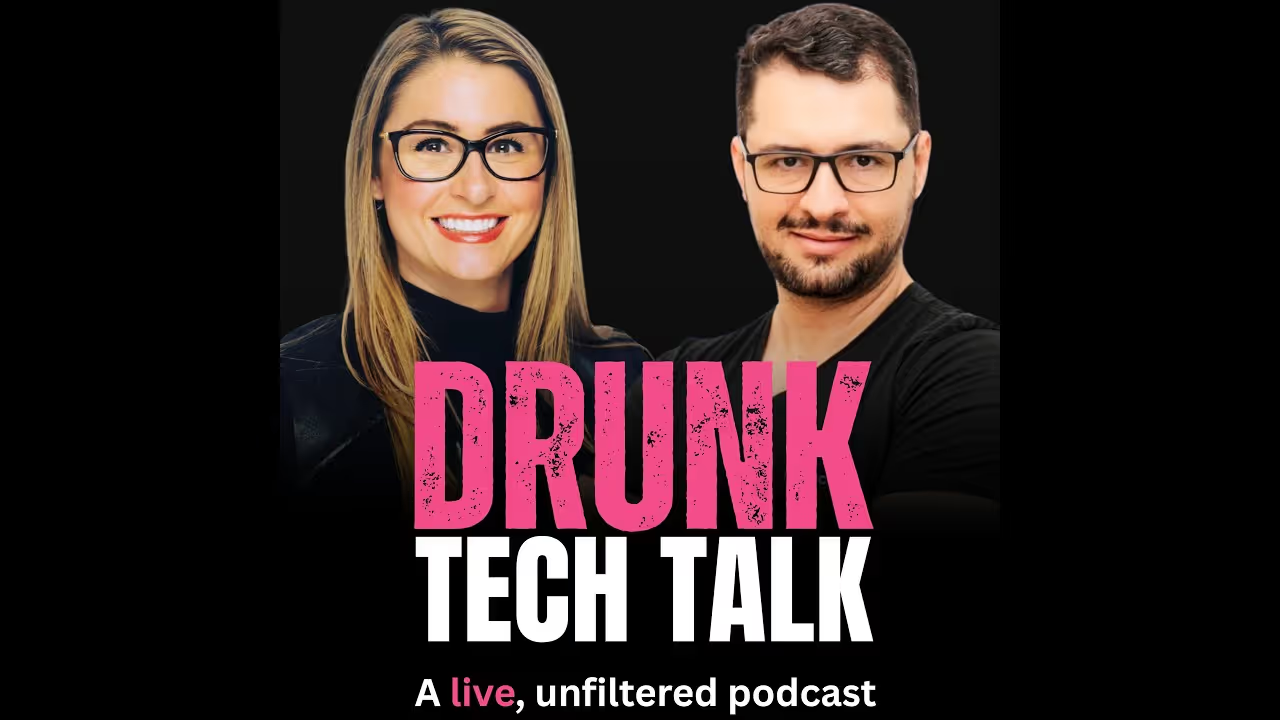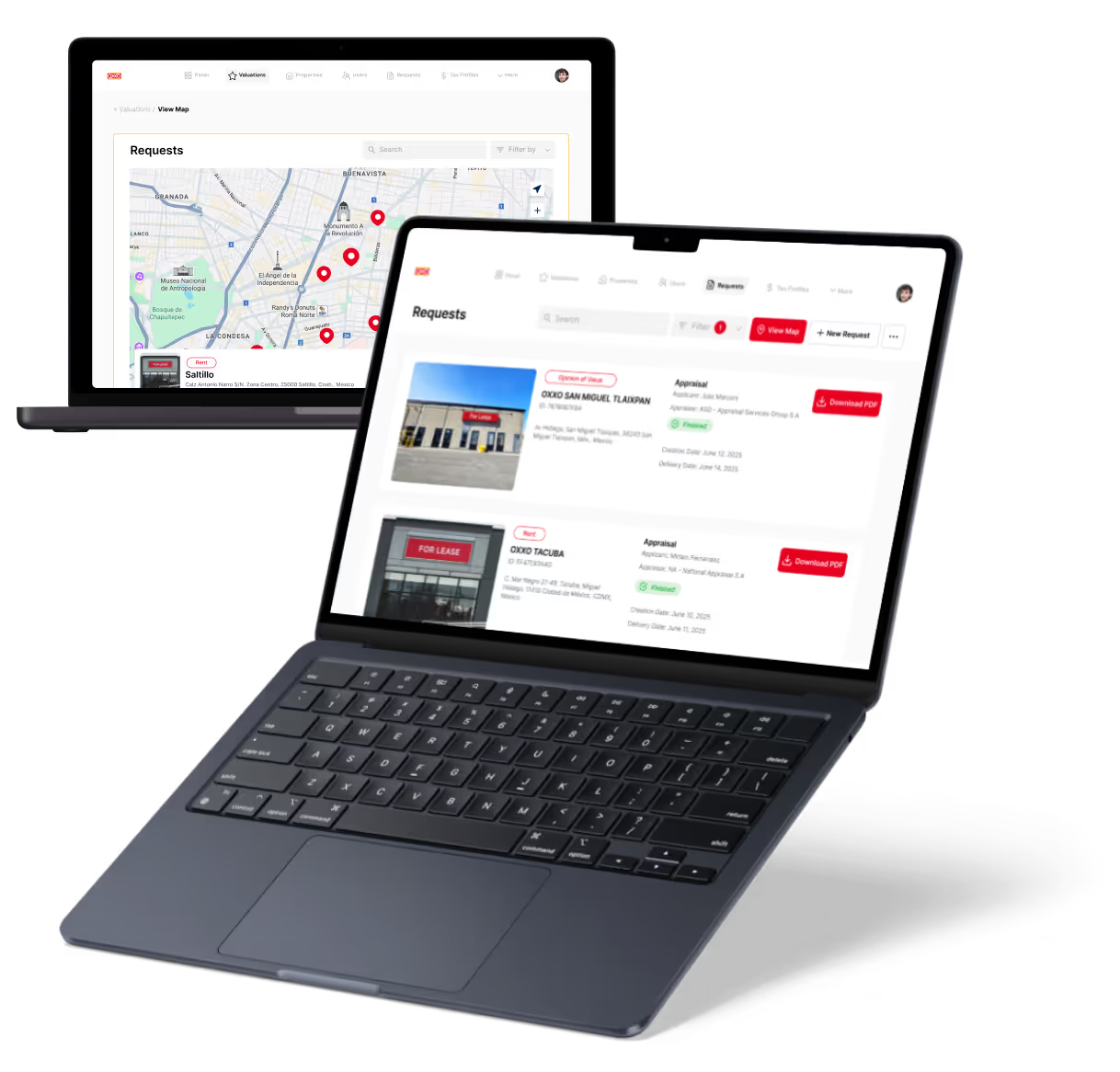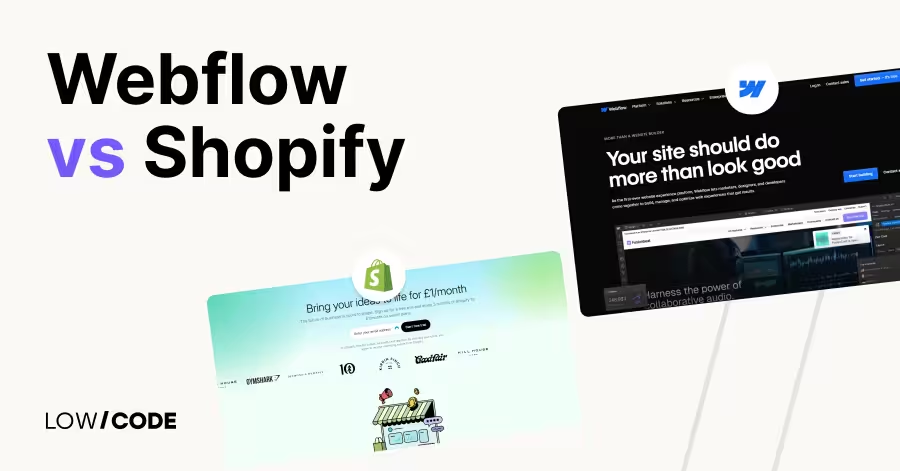Bubble vs PowerApps | 10 Factors to Decide the Best One
16 min
read
Compare Bubble vs PowerApps across 10 key factors to find the best no-code platform for your app, workflow, or business needs

Bubble powers over 2 million apps, helping startups build full web applications without writing a single line of code. On the other hand, PowerApps, part of Microsoft’s Power Platform, is used by over 86% of Fortune 500 companies to streamline internal workflows and automate business processes.
But which one is right for you? That depends on what you're building. Are you creating a public-facing SaaS platform or a custom internal tool for your team?
This article breaks down the real differences between Bubble and PowerApps—from design control and integrations to scalability and ownership—so you can choose the best platform for your needs. Whether you're a solo founder or part of an enterprise team, understanding these two tools can save you time, money, and mistakes.
Quick Comparison Table - Bubble vs PowerApps
1. What’s the core difference between Bubble vs PowerApps?
The core difference between Bubble and PowerApps is who they are built for and how flexible they are.
Bubble is a no-code platform made for startups, entrepreneurs, and businesses that want to build full web apps from scratch. It gives you full control over design, database, and workflows. You can create anything from a marketplace to a SaaS product without writing code.
PowerApps, now called Microsoft Power Apps, is built mainly for business users who already use Microsoft tools like Excel, SharePoint, and Teams. It’s great for making internal tools or automating business processes. But it has more limits when it comes to design and custom logic.
So, if you want to build a public-facing app with custom features, Bubble is better. If you need a quick internal tool within Microsoft 365, PowerApps is the easier choice.
2. Features comparison
Both Bubble and PowerApps offer strong no-code features, but they are designed for different types of apps. Here's how their core features compare.
Bubble features for building full-stack apps
Bubble gives you the tools to build full web applications from frontend to backend without code. It’s built for flexibility and custom app creation.
- Drag-and-drop UI builder: Design responsive web pages without any coding.
- Database management: Create and manage your own database inside Bubble.
- Visual workflows: Build custom logic using if-then rules and triggers.
- API integration: Connect to third-party services like Zapier, Airtable, or custom APIs.
- User authentication: Add login/signup, password reset, and user roles.
- Plugin marketplace: Access hundreds of plugins to add more features.
- Responsive design control: Adjust layouts for desktop, tablet, and mobile.
- SEO tools: Edit metadata, URLs, and optimize pages for search engines.
These features make Bubble perfect for building complex web apps like SaaS tools, marketplaces, CRMs, and more, all without needing to hire developers.
PowerApps features for internal workflows and automation
PowerApps is focused on helping teams create business apps that automate internal work, especially inside the Microsoft ecosystem.
- Microsoft 365 integration: Connect easily with tools like Excel, SharePoint, Teams, and Outlook.
- Templates for business apps: Start with ready-made templates for tasks like approvals or data entry.
- Dataverse and data connectors: Use Microsoft Dataverse or connect to 500+ external sources like Salesforce or SQL.
- Drag-and-drop interface: Quickly build mobile-friendly apps with a visual editor.
- Power Automate support: Automate tasks like sending emails or updating spreadsheets.
- Mobile access: Apps work on iOS, Android, and desktop with no extra work.
- Enterprise security: Uses Microsoft’s security, compliance, and access controls.
- Low-code scripting: Add custom logic with simple Power Fx formulas.
PowerApps works best for internal tools, especially if your business already runs on Microsoft 365 and needs fast, secure automation.
3. UI Design and Customization
Let’s compare how much control each platform gives you when designing your app's user interface.
How much design control does Bubble offer?
Bubble gives you full control over your app’s design. You can drag and drop elements anywhere on the page and style them using custom fonts, colors, spacing, and animations. It works more like a blank canvas where you can design from scratch, similar to how web designers use tools like Figma or Webflow.
You can build responsive layouts for desktop, tablet, and mobile by adjusting how elements behave at different screen sizes. Bubble also lets you use conditions to change how the design looks based on user actions or data.
This flexibility makes it easy to build beautiful, modern user interfaces for any kind of web app. Whether it’s a dashboard, marketplace, or SaaS product, you can control every part of how it looks and feels.
What are the UI customization limits in PowerApps?
PowerApps offers a clean, fast way to build app interfaces, but it’s not as flexible as Bubble. The design system is component-based, with fixed layout rules. You can add text, images, buttons, forms, and charts, but customizing how they look is more limited.
You can change colors, font sizes, and spacing, but you can’t place elements freely like you can in Bubble. Layout options are also more rigid, especially for responsive design. Apps are made to work across devices, but you won’t get full control over how things resize or shift on mobile.
This structured approach helps you build quickly, especially for internal tools. But if your app needs a unique or branded UI, PowerApps may not be the best fit. It’s better suited for business forms and simple dashboards rather than full custom designs.
Read more about:
4. Integrations and Ecosystem
Now let’s look at how well each platform connects with other tools and services you might already be using.
What integrations does Bubble support?
Bubble offers strong integration options through its built-in API connector. You can connect with almost any external tool or service that has a REST API, such as Stripe for payments, Airtable for databases, or SendGrid for emails. It also supports webhooks, so you can set up real-time data flows between apps.
In addition, Bubble has a growing plugin marketplace with hundreds of third-party integrations like Google Maps, PayPal, and Algolia. You can even build your own plugins if needed.
Bubble also connects well with tools like Zapier and Make, allowing you to automate tasks and link with thousands of other apps. This flexibility makes it a great choice if your app needs to talk to multiple systems or pull in external data to run smoothly.
How well does PowerApps integrate with Microsoft tools?
PowerApps is built to work perfectly with Microsoft’s ecosystem. It connects natively with tools like Excel, SharePoint, Outlook, Teams, and Dataverse. This makes it easy to create apps that pull in or send data to these services without needing extra setup.
For example, you can create a PowerApp that logs form entries into a SharePoint list or sends notifications through Teams. PowerApps also works well with Microsoft Power Automate, which lets you build workflows that run across apps like Dynamics 365, OneDrive, and even non-Microsoft tools.
There are also over 500 connectors available, including Salesforce, Dropbox, SQL Server, and more. But deeper integration and performance are best when staying within the Microsoft world.
If your business already uses Microsoft 365, PowerApps helps you build apps quickly using the tools you already know, while keeping everything in one secure environment.
5. Learning Curve and Usability
Let’s explore how easy it is to get started with each platform and whether you need any coding skills to build apps.
Is Bubble easy to learn for beginners?
Bubble is beginner-friendly, but it takes time to master. You don’t need to know code, but you do need to understand how apps work. Bubble gives you a lot of freedom, which also means there’s more to learn. You’ll need to get comfortable with things like database structure, workflows, and responsive design.
The interface is visual, and there are many tutorials, videos, and community forums to help you. Bubble also offers official documentation and templates you can use to speed things up.
Once you understand the basics, you can build almost anything without writing code. It’s great for entrepreneurs or small teams who want full control. Overall, Bubble has a steeper learning curve at first, but it gives you long-term flexibility and power.
Do you need coding knowledge to use PowerApps?
You don’t need coding experience to use PowerApps. It’s made for people who are not developers. Most of the work is done through drag-and-drop tools, simple menus, and ready-made templates. If you know how to use Excel or SharePoint, you’ll pick it up quickly.
PowerApps uses a simple language called Power Fx, which looks like Excel formulas. You can use it to add logic like “if this happens, then do that.” It’s easier than real coding, but still gives you some flexibility.
Since it’s part of Microsoft 365, the platform feels familiar for most business users. You can build working apps fast, even with little technical knowledge. That’s why PowerApps is popular for internal tools—it’s simple, safe, and fits right into the tools your team already uses.
6. Scalability and Performance
Here’s how each platform handles growing user demands, bigger data, and business-level performance.
Can Bubble scale with your app's growth?
Yes, Bubble can scale, but it depends on how your app is built. Bubble hosts your app on its cloud infrastructure and handles server scaling in the background. You don’t have to manage servers or updates. But your app’s speed and performance rely on how well you design workflows, manage data, and use plugins.
You can upgrade to higher plans to get more capacity and better performance. Bubble also supports backend workflows, which help handle complex tasks without slowing down the user interface.
For high-traffic apps, Bubble offers dedicated hosting and custom plans. While it’s not as fast as custom code, it’s strong enough for most startups and small businesses. If you build it right, your Bubble app can grow along with your users, features, and data needs.
Is PowerApps reliable for enterprise use?
Yes, PowerApps is built with enterprise users in mind. It runs on Microsoft’s Azure cloud platform, which gives it strong reliability, uptime, and security. It meets enterprise-grade compliance and data protection standards, making it safe for handling sensitive business data.
PowerApps can manage large-scale internal use, especially when combined with Microsoft Dataverse, which is designed for secure, scalable data storage. It also works well with Active Directory and other Microsoft services, making user access and permissions easy to manage.
You can also monitor app performance, track usage, and enforce governance rules with Microsoft admin tools. However, PowerApps is mostly designed for internal tools, so it’s not ideal for large public-facing apps.
For businesses that already use Microsoft 365, PowerApps offers a smooth and reliable way to scale apps across teams, departments, and even global offices without needing outside infrastructure.
Read more about:
7. Security and Compliance
Security is important when building apps, especially if you’re handling business or user data. Let’s see how each platform handles this.
Is Bubble secure for sensitive data?
Bubble uses secure cloud hosting with built-in protections like SSL encryption, database privacy rules, and user authentication. You can control who sees or edits data by setting privacy rules at the database level. Bubble also offers two-factor authentication and server-side actions to reduce security risks.
However, it’s your job to set up security correctly. If you don’t configure privacy settings properly, sensitive data can be exposed. Bubble doesn’t have official HIPAA or SOC2 compliance by default, so it may not be the best choice for apps needing strict industry certifications.
Still, for most SaaS, marketplace, and startup apps, Bubble provides a secure setup. Just be sure to follow best practices when setting permissions and workflows.
Does PowerApps meet enterprise compliance needs?
Yes, PowerApps meets enterprise compliance standards. Since it runs on Microsoft’s Azure platform, it benefits from enterprise-grade security, including encryption, role-based access control, and identity management through Azure Active Directory.
It supports compliance with standards like GDPR, ISO 27001, and HIPAA (when configured properly). Data stays within Microsoft's cloud, and admins can set detailed policies using Microsoft’s security center and compliance tools.
You can also limit user access, monitor app behavior, and control how data is shared across departments. For companies that need strong security and full control over user roles and data access, PowerApps fits well.
This makes it a strong choice for large businesses and enterprises, especially those working in industries like healthcare, finance, or government where compliance is critical.
8. Code and Data Ownership
Knowing what you own and what you can export matters when planning for long-term growth or switching platforms.
What do you own when building with Bubble?
With Bubble, you fully own your app’s design, workflows, and database content. Your app is hosted on Bubble’s servers, but your data and logic belong to you. You can back up your data, and the database can be exported in CSV format.
However, you can’t export your app’s full code because Bubble uses its own visual programming language. That means you’re locked into the platform for running and editing the app. But Bubble offers export options for some parts, like images, content, and user data.
For most users building startups, Bubble's ownership model is fine. If you need to fully control hosting or move to custom code later, you’ll need to rebuild manually. So, Bubble gives you freedom within the platform, but not outside of it.
Can you export your PowerApps code and data?
PowerApps is part of Microsoft’s cloud system, and your data is stored in places like Dataverse, SharePoint, or connected services. You can export your data, but you can’t export the full app code in a standard programming language like JavaScript or Python.
Apps built with PowerApps stay within the Microsoft ecosystem. You can move apps between environments, share them across teams, or manage them from the Power Platform admin center, but the underlying code remains within Microsoft’s no-code format.
This is fine if you plan to stay within Microsoft 365. But if you ever want to move the app to another platform or rebuild it with code, you’ll need to start from scratch. PowerApps gives you easy tools to build and manage apps but keeps them within its own system.
9. Community and Support
A strong community and good support can make learning easier and help you solve problems faster.
Does Bubble have an active user community?
Yes, Bubble has a growing and active community. Its forum is full of helpful users who share tips, answer questions, and showcase their projects. You’ll find many tutorials, YouTube channels, and even full courses created by Bubble experts.
Bubble also has a large template and plugin marketplace made by the community. This makes it easy to get started and add new features. The company itself offers learning resources like Bubble Academy, official documentation, and email support.
If you’re stuck, you can often find a solution just by searching the forum. There are also paid experts and agencies that offer help with custom builds.
This strong community is a big reason why many founders and startups choose Bubble. You’re never alone when building.
What kind of support does PowerApps offer?
PowerApps has strong support from Microsoft and its partner network. There’s a large library of official documentation, video guides, and learning paths through Microsoft Learn. Since it’s part of the Microsoft Power Platform, support extends across related tools like Power Automate and Dataverse.
If your company uses Microsoft 365, your IT team can often manage support in-house. For more help, Microsoft offers paid support plans with direct access to technical experts. There’s also a community forum where you can ask questions and get answers from other users or Microsoft staff.
Enterprise customers can take advantage of advanced tools like service health dashboards and usage analytics. Overall, PowerApps provides professional support and training options that fit well with large teams and businesses that already use Microsoft services.
Read more about:
10. Final Verdict – Which One Should You Choose?
Both platforms are great, but the better choice depends on your goals, team, and tech stack.
When to choose Bubble over PowerApps
Choose Bubble if you want to build a public-facing web app like a SaaS, marketplace, or customer portal. Bubble is great for startups, solo founders, and small businesses who need full control over design, database, and workflows without hiring a full tech team.
It’s ideal if:
- You need custom app logic and flexible UI.
- You want to launch and scale a full product.
- You’re okay managing performance and security settings yourself.
- You prefer working outside the Microsoft ecosystem.
Bubble lets you create nearly anything from scratch, making it perfect for full product development without code.
When to choose PowerApps over Bubble.io
Choose PowerApps if your company already uses Microsoft 365 and needs internal tools fast. It’s great for automating workflows, building business apps, and connecting to Microsoft services like Excel, SharePoint, and Teams.
It’s ideal if:
- You want quick solutions for internal use.
- Your team is familiar with Microsoft tools.
- You need enterprise-grade security and compliance.
- You prefer working in a structured, low-code environment.
PowerApps is perfect for businesses that want secure, scalable apps inside their existing Microsoft setup.
Created on
July 1, 2025
. Last updated on
December 11, 2025
.

FAQs
Is Bubble good for building public web apps?
Can I use PowerApps to build customer-facing apps?
Does Bubble require a subscription to start?
Can PowerApps work without Microsoft 365?
Which platform is better for long-term growth?
Is there a big difference in learning time between the two?







%20(Custom).avif)








.avif)